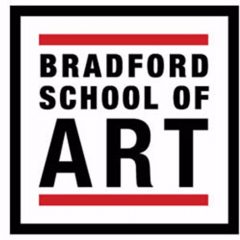I was asked to document my Pre-Production progress as evidence of the creation of my project to be used in the future to explain how and what was made, to do this I will document every process we took every step of the way.
Initially me and Salman sat down and brainstormed various ideas of which we wanted to create, things such as a platformed, action adventure RPG, simulator and world creation game, in the end we settled on a Rogue-Like Dungeon Crawler game, as seen in the mind map we created below.
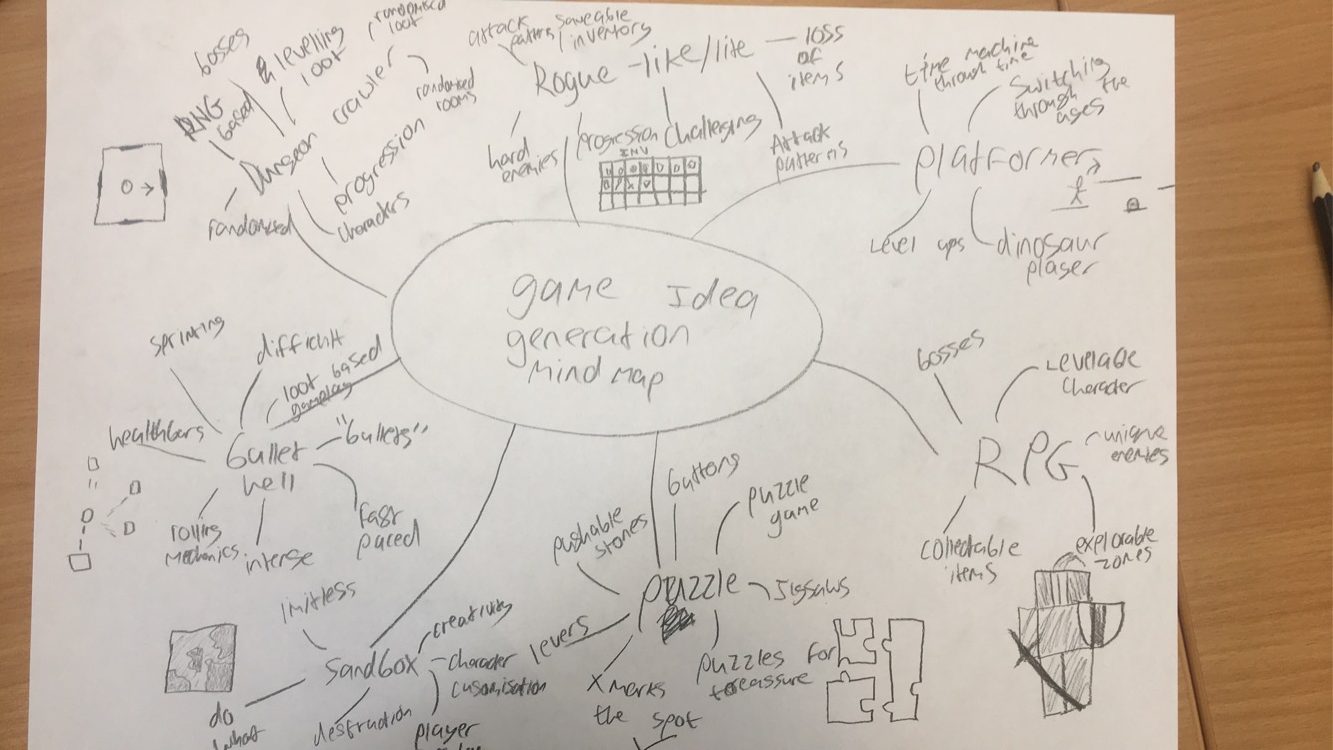
Upon deciding which Genre we where thinking of creating the game around, we then created another mind map to brainstorm further ideas of mechanics and features of which we wished to be implemented into the game, things such as items which can be picked up, a simple animation system, a simple inventory and a simple damage system ect, this helped us narrow down what the entire game was going to look like.
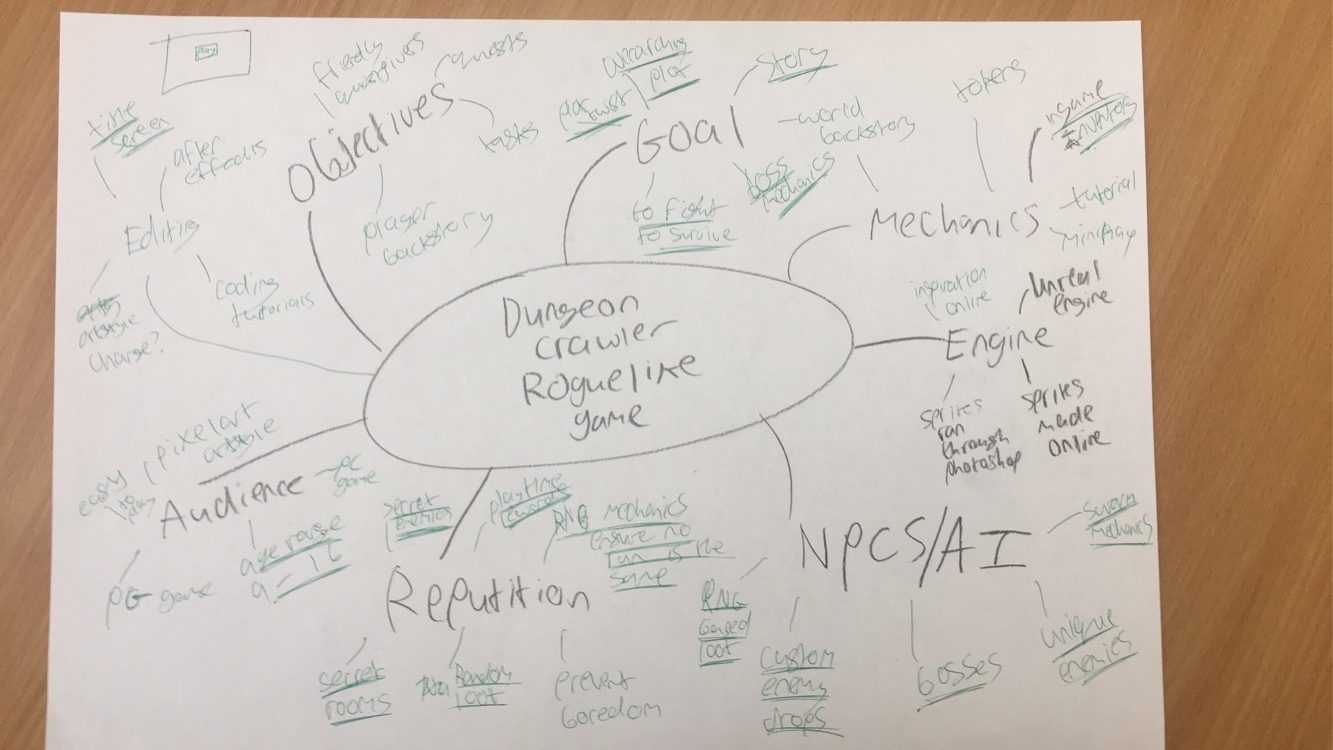
After narrowing down the game to its specifics using the mind map, we later turned our focus to what the game would look like, searching the internet for art styles we liked and thought would be viable, even taking inspiration from games we have played previously or would like to play in the future, one of these games being ROTMG (Realm Of The Mad God) which we based the art style of the game of off heavily.)

After consulting with Jake about the viability of the art style we had chosen we began work on another area of the game we believed should be discussed would be the mechanics of the game itself, such as the inclusion of an RNG based room system, which is a mechanic that decides which theme the next room the player enters will be, and whats inside of it.

Once me and Salman properly discussed the game we wanted to create, decided upon the genre, art style, in-game mechanics, we decided to turn our gaze back to the art style by thinking about what the in-game enemies will look like, and what the NPC’s/AI we will be fighting will be based upon and themed around, to do this Salman created a concept art sheet which labels some of the potential enemies within the game.
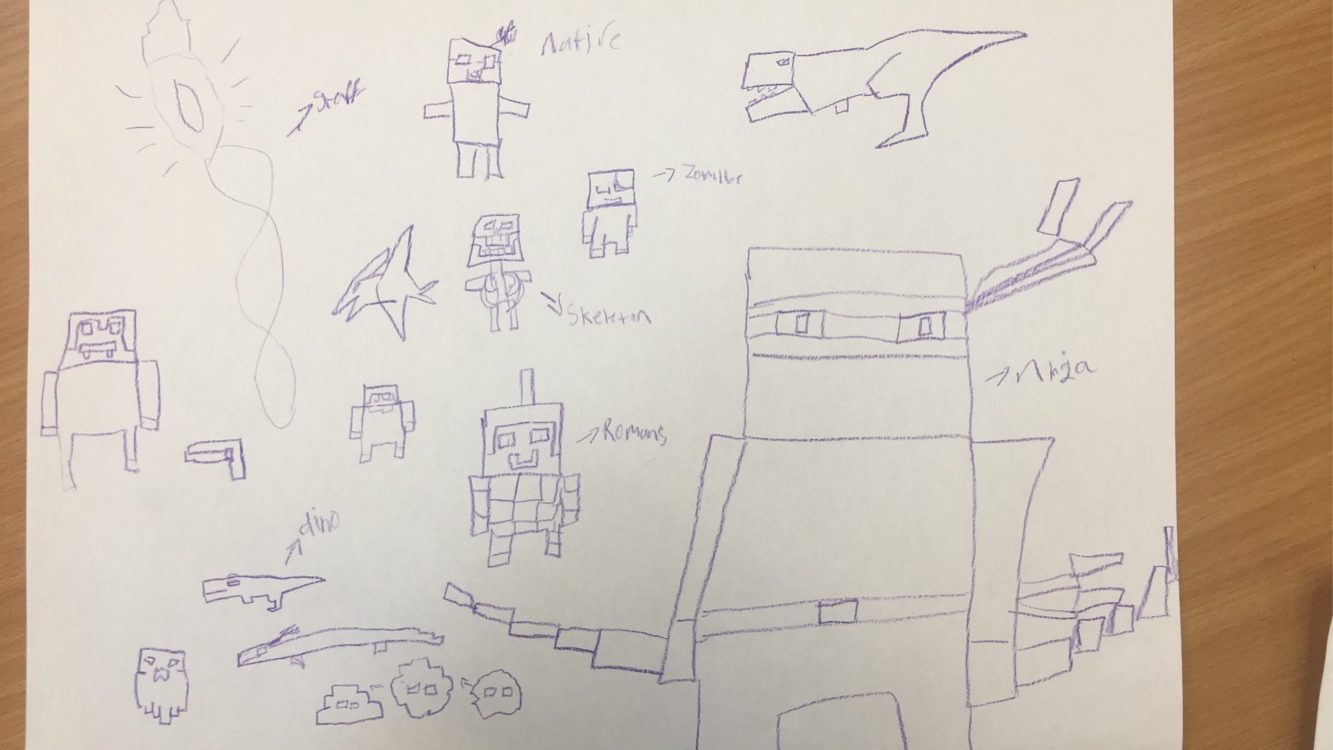
Upon the creation of the concept art sheet Salman set to work on the early designs of the templates which will be used in the future, having created the first template for the player character on the 11th Of March we then set out to create a full spreadsheet to incorporate animations of which we wanted the player to see whenever they do a task.

After completing the initial template, I assisted Salman in the creation of the full sprite spreadsheet which will be used for the majority of in-game NPC’s (and the player character’s) sprites.
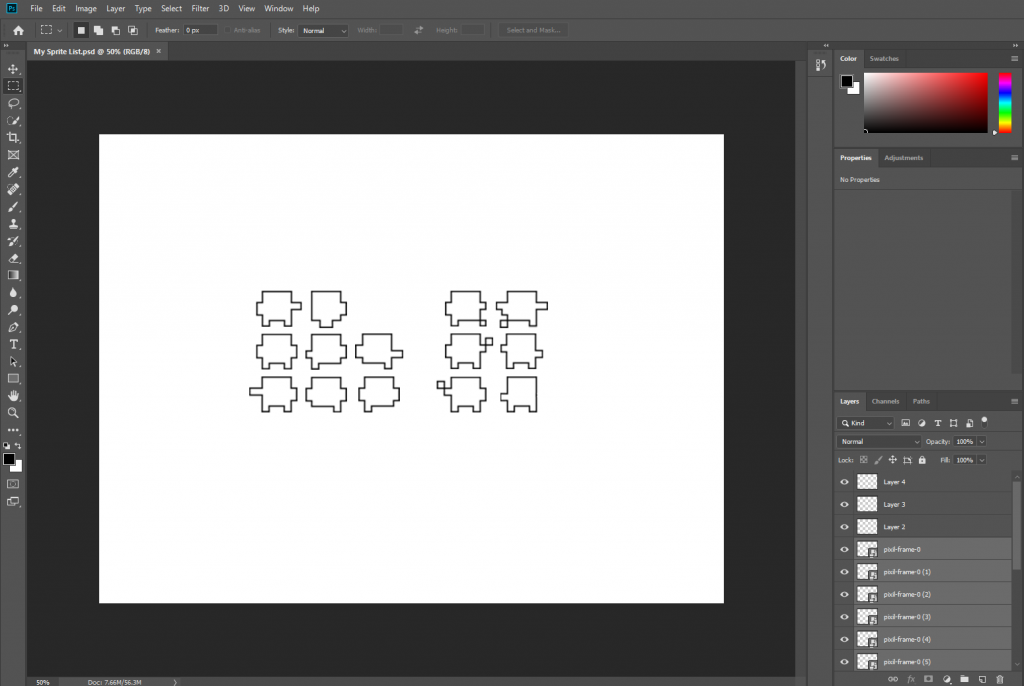
After the creation of the sprite sheet which included each of the sprite templates me and Salman fully decided which of us will be doing what, in which we decided that I will in control of Level Design, Coding, Level Creation, and Salman would be in control of Sound, Character Design and Prop Design (items, environmental items such as trees ect.) although we would help each other when necessary these would be our separate tasks until they are combined later on.

After the responsibilities of me and Salman were decided our paths diverged for the time being, whilst he focused on character design and prop creation, i began to turn my attention to the general mechanics of the game which are fully decided, consulting with Jake on which mechanics would be best for a 2D Rogue-Like Dungeon Crawler, said mechanics which will 100% be in the game are listed below.
Item Collection, Boss Mechanics, Unique Enemies, Unique Player Models, RNG Based Mechanics, Randomised Loot, Randomised Enemies, Randomised Room Themes, Secret Room, Secret Enemies, Minibosses, Inventory System, Randomised Objects, Death Inventory, Custom Enemy Drops, Custom Music, Functioning AI.
Updated Audience profile:
It was at this point that me and Salman decided upon the general audience we wanted to target our game towards, this being 12+ we initially chose the age 10+ for our game in the pitch, but after careful consideration of the enemies and how some of the environments may be new and scary to a younger audience, such as the somewhat mature theme of the future stage ( a post apocalyptic nuclear war scenario stage) may be difficult for younger to understand, to appeal to this somewhat older audience we have added some new enemy types like some medieval units and ninja units respectably, we added these as this older audience usually finds them appealing.
After deciding everything in Pre-Production setting me and Salman set to work on our individual workloads, we began experimentation, which helped us figure out how we would create the game, I began constructing tests of the game, laying out coding with the assistance of Jake, which helped me understand how to create these game environments more efficiently, it helped me understand things such as player movement creation, random room generation and room creation.
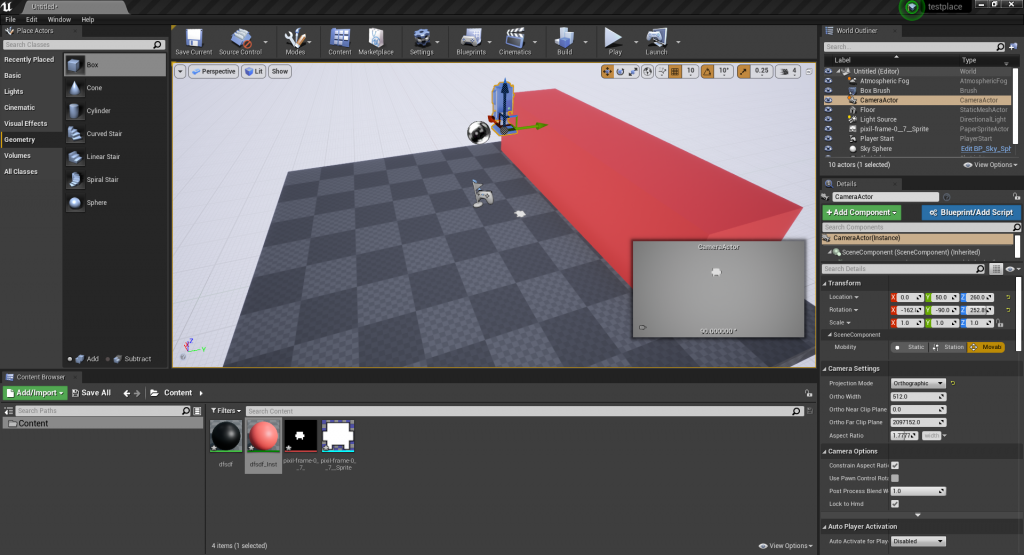
The first test that was conducted would be figuring out how to properly place the player on the ground, adjusting the camera angle to fit the proposed top down view, this was solved by properly creating the right angle using correct rotations.
A problem that was immediately evident was the difficulty of creating a viewable environment from the previously mentioned camera angle, to solve this issue we decided to run the test in 3D, whilst giving off the illusion that the game is 2D, as the 2D setting had shown no created obstacles whilst used, essentially creating a view of which the player can’t see anything other than a the player model.

After this Jake and I set to work on creating a working animated character, which would change its pose in correspondence to the players inputs, such as changing to a right walking sprite when the player clicks or holds D, or changing to a idle pose when the player is doing nothing, it was fairly difficult as we had to figure out how to ensure the player character isn’t stuck in one pose and how it’ll differentiate between idle and subtle movements, such as a single keystroke.

We managed to center the player character so they where in center with the camera, making for easy viewing and a game which was easier on the eyes, also adjusting the player hitbox, so their wasn’t any discrepancies when they touched a wall or an enemy, meaning they wouldn’t be stopped by some magical invisible wall due to a miss-sized hitbox, or get hit by a bullet which was far away from their player character.
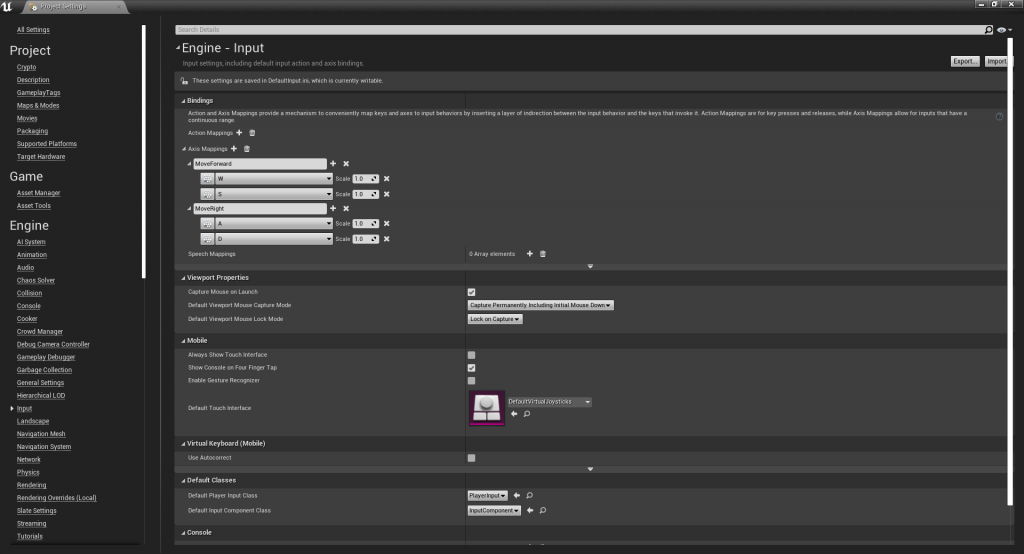
Jake then showed me how to create a movement pattern, showing me how to create a WASD format for my character to use, he also showed me how to adjust the speed of which the character would move, and how far they would move between each singular key stroke, ontop of showing me the -0 +0 system it worked upon, essentially meaning that if walking upwards was +1 then walking downwards would subsequently be -1 and so on.
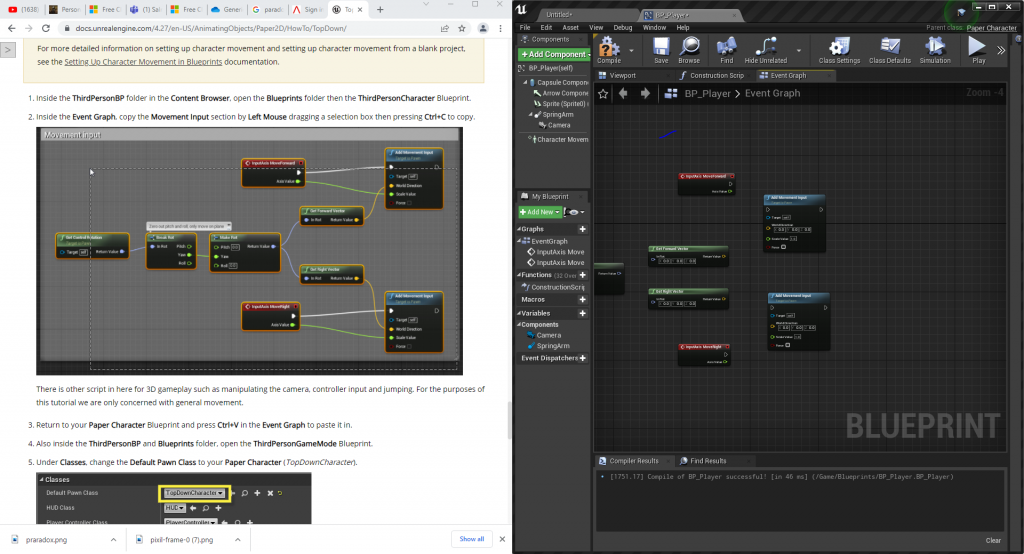
To create a working movement input system we gathered information from the internet, as 2D movement was a new system for the both of us, above is an image of a system we decided would be suitable for the test we had created, we created out own movement system from this base, and adjusted it when needed.
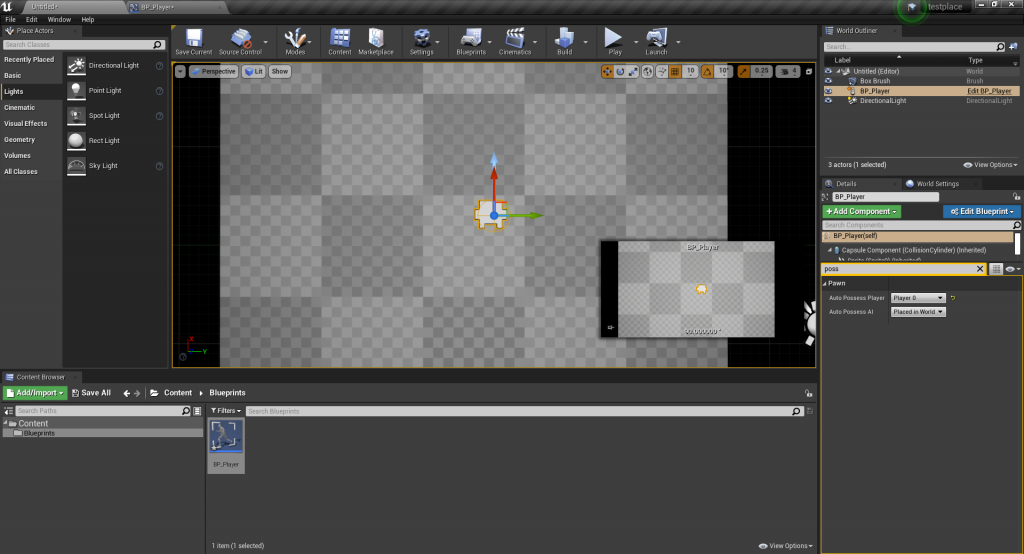
Next we tested out the walking, the player model moved seamlessly, and was overall a complete success, the player moved at the correct speed and stopped at the correct time, the next step was to add the sprite templates from my+salmans sprite sheet template list.
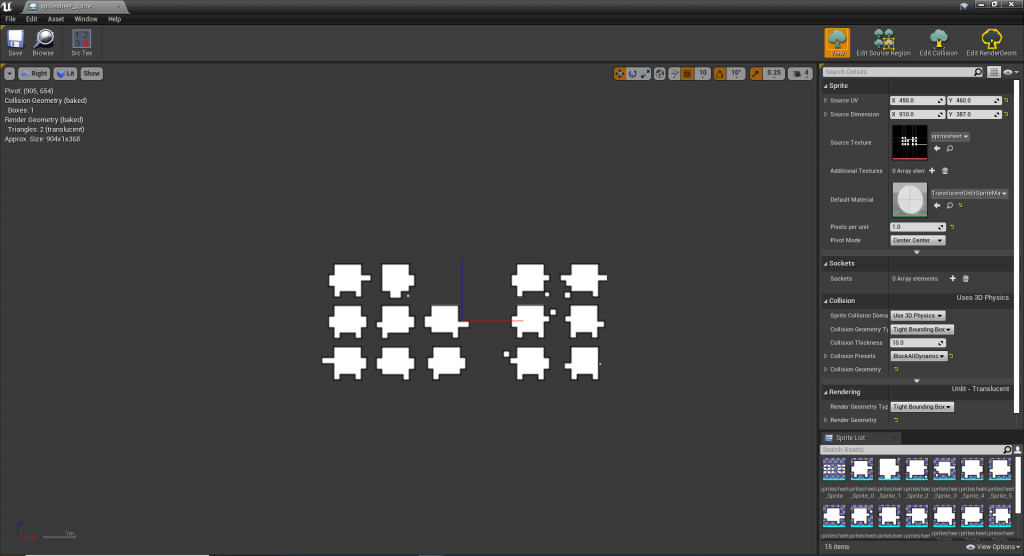
After some struggles we managed to implement a working sprite change system, the player character would change sprite whenever the correct action was performed, such as the character changing to a walking downwards sprite when walking downwards, the sprite is an empty white template and will be adjusted to match the player character in later development, but for now it was successful, other than a visual discrepancy on the walking right+left animation which was later fixed.
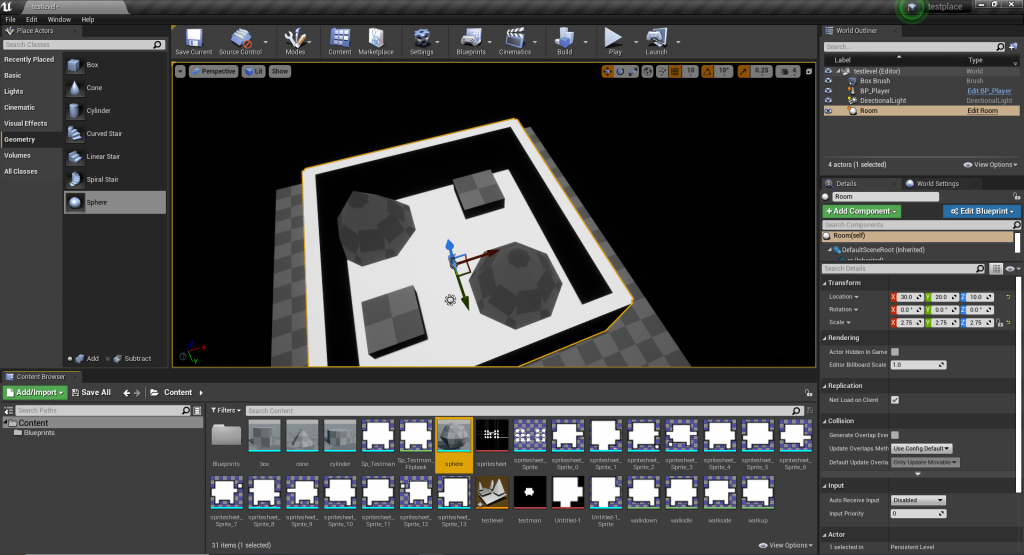
After the implementation of the sprite list into the animation movement set, I asked Jake of what he knew about random room generation, which is one of the key components of the game I wish to implement, and he showed me how to create a random room environment, putting a selection of 4 shapes and later a door into the random generation, he showed me how to create this environment and how the RNG would work in the selection of the rooms and their contents.

Once the door was implemented we had a solid grasp on how the RNG mechanics for the game would work, once the player character walks through said door (presumably after defeating the rooms enemies in the actual game) a new room would be created, in the picture above the floor is orange, representing a completely different room theme to the white one seen before, this is showing the different room themes we intend on creating.
After all of my Pre-Production was completed I decided to base my game upon the Testplace I had already created, adding onto the Testplace with more and more content and eventually forming it into the actual game, the Pre-Production is currently finished at 25/4/22, I may add to it in the future If i remember any missed production methods I may have used, please continue onto “Production Documentation” for further information on the development on the game.
